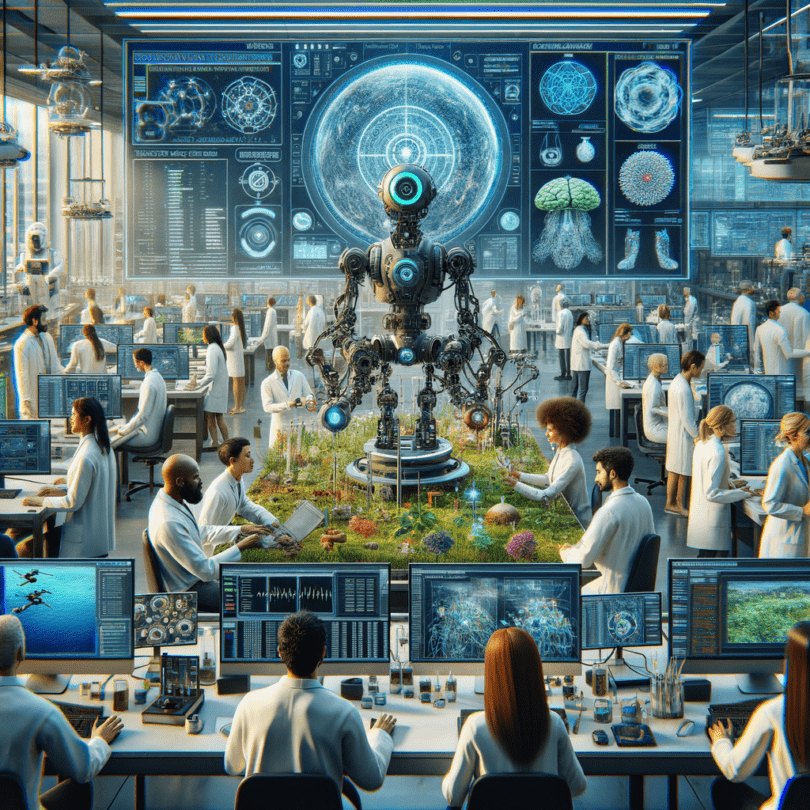Let me tell you, trying to teach artificial intelligence to recognize environmental hazards? It’s like strapping in for the wildest rollercoaster ride of your life. Imagine the kind with unexpected loops and drops that make your stomach flip – that’s what it’s like! It’s full of excitement and frustration, a real emotional whirlpool when you’re knee-deep in the trenches, urging a machine to see Mother Nature’s chaotic beauty and complexity as clearly as any human.
Before I delve into this adventure, let me share a bit about myself and why this journey is so dear to me. My love affair with the environment began on blissful days spent hiking beneath leafy tree canopies and challenging rocky paths. But truth be told, when it comes to using AI to protect these cherished spaces, it’s a mix of awe and all-too-real frustration. Imagine a digital mind standing guard over nature’s wonders—just thinking about it sends shivers down my spine, in a good way and sometimes a not-so-good way.
Picture this: trying to get AI to spot environmental hazards is a bit like teaching a little kid to tell a fluffy puppy from a growling bear using only pictures. Seems straightforward, right? But swap that toddler for an AI algorithm, and trust me, it’s not such a walk in the park. Just as a toddler might mistake a grizzly for a giant teddy bear, AI trips up too. When those learning hiccups happen with disasters like floods or pollution, well, let’s just say the consequences are heavy.
Now, one of the biggest challenges is just how many different environmental hazards we face. Seriously, there’s a baffling range! Wildfires, tornadoes, oil spills, illegal logging… the list could go on forever. Each of these needs its own unique data and learning “secret sauce.” If you think one-size-fits-all works with AI, you’re in for quite the surprise. Just like a birdwatcher takes pride in spotting the difference between a finch and a sparrow, AI needs to become just as discerning—but with infinitely higher stakes. Training these digital learners means holding their hands through endless lessons if that’s what it takes!
Training AI isn’t straightforward, and it sure isn’t a logic-filled stroll. It can latch onto the weirdest details out of nowhere. Give it a gazillion pictures of wildlife, hoping it’ll spot endangered species, but show it one image of a slightly odd-looking tree, and poof! That tree is now its obsession. It’s like leading AI into a meadow filled with blossoms only for it to zero in on a single weed. Humans get distracted; AI, apparently, can too!
And oh my, the importance of clean, good data! Imagine feeding bad data to AI—it’s like putting a blindfold on a guide dog. Not good, right? There were times I had datasets that looked just right, only to discover they had hidden flaws, much like finding out your masterpiece painting has tiny, pesky holes. Trust? AI is on a long journey to earn it, let me tell you.
And we really can’t ignore public perception. Gaining people’s trust in AI systems plagued with these hurdles feels like making a sales pitch for a family soup recipe as the next wonder drug. Skepticism? Oh, there’s plenty of that. But if we present AI’s successes well, it can stand as a champion for our planet. Like when it spots potential tempests on calm seas or discovers pollutants lurking in lakes before disaster strikes.
Here’s the heartfelt bit: at the core of this AI teaching process is love—a love for this world we call home. It’s a heartfelt mission, one driven by passionate urgency. I imagine AI like a character in a story, gradually finding its moral compass amid the wild array of environmental challenges.
Failures? Oh, there are many, like life tossing uncontrollable curveballs. AI might mistake a gentle cloud for a violent storm or misread animal movements as something sinister. Tech, like us humans, stumbles. But each mistake fuels new determination, and each success sparks a fountain of hope, like bricks in the grand structure of our ambitions.
Despite the bumps, there’s this amazing potential within AI. Whenever it accurately predicts a flood and saves lives, it’s like winning a personal victory—one that spurs us forward. AI, when guided wisely, contributes as a hero in our grand tale of environmental sustainability. Just as a novel has its thrilling highs, so does AI, given the right nurturing and oversight.
I jumped on this journey because I adore this planet and everything in it. Protecting those breathtaking vistas and the lives within them for future generations fills me with a purpose. AI is more than a tool—it’s a cherished ally in this endeavor. The hurdles we overcome now pave the way to a harmonious future where tech and nature work hand-in-hand for the betterment of us all.
But until then, relinquishing control to machines needs our careful guidance. The promise of harmony between AI and the natural world beckons, yet it’s a path woven with nostalgia, hope, and human and machine’s shared imperfections.
For anyone who ventures into this field, know the challenges, for sure. They’re like storm clouds gathering before a rainbow of achievement unfolds. The gentle hum of AI learning under nurturing minds is a symphony of possibilities, not just technical progress. Call it a wild ride or whatever suits you, but let’s step into the future together, hearts anchoring us to a vision of a safer, more vibrant world.

